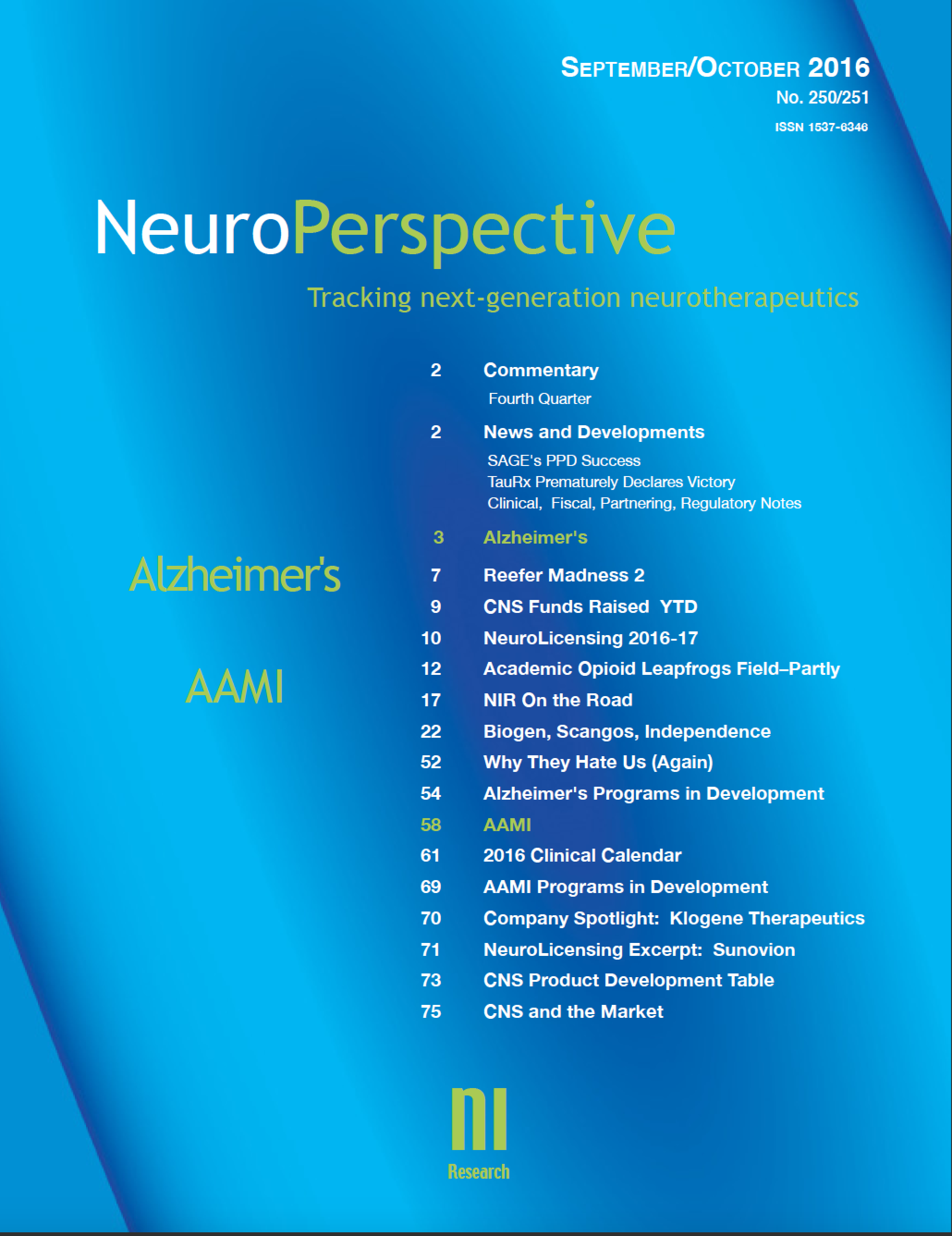The May/June 2019 issue of NeuroPerspective has been released, offering detailed reviews of two therapeutic areas, as well as coverage and commentary regarding significant developments in the CNS therapeutics space.
The first therapeutic sector review covers Multiple Sclerosis, which to some degree represents the kind of therapeutic efficacy and choices that the rest of the neurotherapeutics area aspires to achieve, but remains problematic for some populations and in the risk-benefit profiles available for the disease modifiers. Biogen‘s commercial dominance is being threatened by the highly successful advent of Roche‘s Ocrevus and what will eventually turn into a parade of patent expirations. Progressive MS, both Primary and Secondary, has only begun to be addressed by Ocrevus and Mayzent, and with far less impact than can be brought to bear on Relapsing-Remitting MS. Even in RRMS, patients have generally had to confront a choice between efficacy and safety, where the most impactful therapeutics also come with the most dire adverse event risks (e.g. Tysabri and PML). Beyond disease-slowing, MS is the context where regenerative therapies are most likely to first make their mark in the neuro field, with remyelination high on the priority list. In terms of high profile programs, the development of new targets in neuroinflammation is very applicable to MS, with programs from Sanofi/Denali, Merck KGa, Annexon, and Disarm Therapeutics among the most interesting approaches. Remyelination/regeneration is the goal of programs from AbbVie, Biogen, and Roche/Inception 5, with ‘inhibiting the inhibitors’ and fostering oligodendrocyte differentiation standing out as the primary tactics.
The second therapeutic sector review covers Insomnia, an area which is dominated by GABAergic generics, but is also the context for the therapeutic elucidation of the orexin receptor system as a means of modulating wakefulness and sleep. There is an active debate as to how best utilize the orexin system, via dual receptor agonists, as was the case with Merck’s Belsomra (as well as Eisai/Purdue, Idorsia), or selective orexin-2 agonists, such as Minerva Neuroscience’s seltorexant. The FDA’s priorities have gone somewhat askew in the insomnia field, with a preoccupation with rare side effects and subtle decrements in ‘next-day driving’, which are less of a real-life problem than untreated insomnia and the heavy reliance upon OTC soporifics which have substantial next-day residual effects.
The May/June issue also includes discussion of recent developments for companies addressing depression (JNJ/Janssen, Allergan); substantial doubts regarding the viability of NGF mAbs in pain; and the obstacles the FDA has been presenting to pain companies, particularly in the ‘abuse-deterrent’ space.
More than 150 pharma and biotech firms, VCs, NIH researchers, and academic tech transfer offices subscribe to NeuroPerspective to ensure that they are up-to-date with the coverage of developments in the neurotherapeutics industry. NI Research is the leading publisher of independent research on the neurotherapeutics industry, and has developed an unmatched information base regarding both publicly and privately held CNS companies. NeuroPerspective is the authoritative, independent, monthly review of the neurotherapeutics area, providing critical analyses of therapeutics-in-development. A one-year (1-5 user) subscription to NeuroPerspective is $2800. Special startup, nonprofit, and academic pricing is available. The May/June issue of NeuroPerspective is available as a single-issue purchase for $600.

